The Analysis of the EDGE Certification System on Residential Complexes to Improve Sustainability and Affordability
Abstract
1. Introduction
2. Methodology
3. EDGE Building Evaluation System in South Africa
3.1. EDGE Environmental Strategies in 17 Residential Complexes
3.2. EDGE Certification Process
3.3. EDGE Zero Carbon Certification
4. Result
4.1. Environmental Technical Strategies
4.1.1. Energy Saving Strategy
4.1.2. Water Saving Strategy
4.1.3. Material Use and Saving Strategy
4.2. Environmental Improvement
4.2.1. Energy Savings
4.2.2. Water Savings
4.2.3. Embodied Energy in Materials Savings
4.2.4. Total Annual CO2 Savings
4.2.5. Statistical Analysis of Relationship between Energy, Water, and CO2 Savings and Floor Area
4.3. Solution to Housing Issues and Accommodation Capacity
5. Discussions
6. Conclusions
Author Contributions
Funding
Acknowledgments
Conflicts of Interest
Abbreviations
| BREEAM | Building Research Establishment Environmental Assessment Method |
| CASBEE | Comprehensive Assessment System for Built Environment Efficiency |
| CO2 | Carbon dioxide |
| DGNB | German Sustainable Building Council |
| EDGE | Excellence in Design for Greater Efficiencies |
| EPA | U.S. Environmental Protection Agency |
| GBCSA | The Green Buildings Council of South Africa |
| GDP | Gross Domestic Product |
| G-SEED | The Green Standard for Energy and Environmental Design |
| HQE | Haute Qualite Environnementale |
| HVAC | Heating, Ventilation, and Air Conditioning |
| IEA | International Energy Agency |
| IFC | International Finance Corporation |
| HIS | International Housing Solutions |
| LEED | Leadership in Energy and Environmental Design |
| LPG | Liquefied petroleum gas |
| MHA | The Madulammoho Housing Association |
| MSP | Multi Spectrum Property |
| SHRA | The Social Housing Regulatory Authority |
| TPF | Transcend Residential Property Fund |
| USD | United States Dollar |
| WWR | Window-to-wall ratio |
References
- Santamouris, M.; Vasilakopoulou, K. Present and future energy consumption of buildings: Challenges and opportunities towards decarbonisation. e-Prime—Adv. Electr. Eng. Electron. Energy 2021, 1, 100002. [Google Scholar] [CrossRef]
- Tokbolat, S.; Karaca, F.; Durdyev, S.; Nazipov, F.; Aidyngaliyev, I. Assessment of Green Practices in Residential Buildings: A Survey-Based Empirical Study of Residents in Kazakhstan. Sustainability 2018, 10, 4383. [Google Scholar] [CrossRef]
- IEA. Global Status Report for Buildings and Construction; IEA: Paris, France, 2019; Available online: https://www.iea.org/reports/global-status-report-for-buildings-and-construction-2019 (accessed on 7 September 2022).
- Alhazmi, H.; Alduwais, A.K.; Tabbakh, T.; Aljamlani, S.; Alkahlan, B.; Kurdi, A. Environmental Performance of Residential Buildings: A Life Cycle Assessment Study in Saudi Arabia. Sustainability 2021, 13, 3542. [Google Scholar] [CrossRef]
- Park, J.; Loftness, V.; Aziz, A.; Wang, T.-H. Critical factors and thresholds for user satisfaction on air quality in office environments. Build. Environ. 2019, 164, 106310. [Google Scholar] [CrossRef]
- Park, J.; Loftness, V.; Aziz, A.; Wang, T.-H. Strategies to achieve optimum visual quality for maximum occupant satisfaction: Field study findings in office buildings. Build. Environ. 2021, 195, 107458. [Google Scholar] [CrossRef]
- Park, J.; Loftness, V.; Aziz, A. Post-Occupancy Evaluation and IEQ Measurements from 64 Office Buildings: Critical Factors and Thresholds for User Satisfaction on Thermal Quality. Buildings 2018, 8, 156. [Google Scholar] [CrossRef]
- Park, J.; Loftness, V.; Wang, T.-H. Examining In Situ Acoustic Conditions for Enhanced Occupant Satisfaction in Contemporary Offices. Buildings 2022, 12, 1305. [Google Scholar] [CrossRef]
- SnowBrains. Brain Post: How Much Time Does the Average American Spend Outdoors?—SnowBrains. Available online: https://snowbrains.com/brain-post-much-time-average-american-spend-outdoors/ (accessed on 13 July 2022).
- Danielle, K. 7 Charts that Show How Americans Spend Their Time—Vox. Available online: https://www.vox.com/2014/4/11/5553006/how-americans-spend-their-time-in-6-charts (accessed on 24 July 2022).
- Van Doorn, L.; Arnold, A.; Rapoport, E. In the Age of Cities: The Impact of Urbanisation on House Prices and Affordability. In Hot Property: The Housing Market in Major Cities; Nijskens, R., Lohuis, M., Hilbers, P., Heeringa, W., Eds.; Springer International Publishing: Cham, Switzerland, 2019; pp. 3–13. [Google Scholar] [CrossRef]
- Obioha, E.E. Mission Unaccomplished: Impediments to Affordable Housing Drive in Addressing Homelessness in Sub-Saharan Africa. Soc. Sci. 2021, 10, 310. [Google Scholar] [CrossRef]
- Yale Experts Explain Green Building Certifications|Yale Sustainability. 19 October 2020. Available online: https://sustainability.yale.edu/explainers/yale-experts-explain-green-building-certifications (accessed on 16 August 2022).
- Loftness, V.; Hartkopf, V.; Aziz, A.; Choi, J.-H.; Park, J. Critical Frameworks for Building Evaluation: User Satisfaction, Environmental Measurements and the Technical Attributes of Building Systems (POE + M). In Building Performance Evaluation; Springer: Berlin/Heidelberg, Germany, 2018; pp. 29–48. [Google Scholar] [CrossRef]
- Stephanie, V. Green Building Standards and Certification Systems|WBDG—Whole Building Design Guide. 17 June 2022. Available online: https://www.wbdg.org/resources/green-building-standards-and-certification-systems (accessed on 24 July 2022).
- Certification. EDGE Buildings. Available online: https://edgebuildings.com/certify/certification/ (accessed on 24 July 2022).
- How BREEAM Works—BRE Group. 11 April 2022. Available online: https://bregroup.com/products/breeam/how-breeam-works/ (accessed on 29 September 2022).
- LEED v4 for Building Design and Construction. Available online: https://www.usgbc.org/sites/default/files/LEED%20v4%20BDC_07.25.19_current.pdf (accessed on 29 September 2022).
- Basic Structure of the DGNB System. Available online: https://static.dgnb.de/fileadmin/dgnb-system/en/buildings/new-construction/criteria/Evaluation_and_structure_of_the_DGNB_system.pdf (accessed on 29 September 2022).
- HQE. Join the Movement for Performance and Quality of Life; n.d. HQE: Temecula, CA, USA. Available online: https://www.behqe.com/documents/download/19 (accessed on 24 July 2022).
- Assessment Tool of CASBEE. Available online: https://www.ibec.or.jp/CASBEE/english/method2E.htm (accessed on 30 September 2022).
- Seon-Soo, M.; Dong-Woo, C.; Ah-Reum, P. A Comparative Study on Office Building Criteria between G-SEED and LEED. KIEAE J. 2014, 14, 59–66. [Google Scholar] [CrossRef][Green Version]
- Deisy, V. USGBC Announces Top 10 Countries and Regions for LEED in 2021. usgbc, 09 February 2022. Available online: https://www.usgbc.org/articles/usgbc-announces-top-10-countries-and-regions-leed-2021 (accessed on 27 July 2022).
- Pressroom, Green Building Council Brings IFC’s EDGE Certification to South Africa’s Residential Property Market. IFC, 25 September 2014. Available online: https://pressroom.ifc.org/all/pages/PressDetail.aspx?ID=16431 (accessed on 24 July 2022).
- Certifiers & Pricing. EDGE Buildings. Available online: https://edgebuildings.com/certify/certifiers-pricing/ (accessed on 27 July 2022).
- What Is EDGE? EDGE Buildings. Available online: https://edgebuildings.com/about/about-edge/ (accessed on 8 July 2022).
- How to Apply for EDGE Zero Carbon Certification. Available online: https://edgebuildings.com/wp-content/uploads/2022/05/200316-How-to-Apply-for-EDGE-Zero-Carbon-Certification.pdf (accessed on 24 July 2022).
- Green Buildings Market Intelligence South Africa Country Profile. Available online: https://edgebuildings.com/wp-content/uploads/2022/04/South-Africa-Green-Building-Market-Intelligence-EXPORT.pdf (accessed on 24 July 2022).
- Mortgages and home loans in South Africa. Expat Guide to South Africa|Expatica. Available online: https://www.expatica.com/za/housing/buying/getting-a-mortgage-in-south-africa-1532664/ (accessed on 24 July 2022).
- EDGE Buildings. Building Green for a Better Future; EDGE: Cape Town, South Africa, 2019. [Google Scholar]
- Risenga, M. Unemployment and Poverty in South Africa a provincial Perspective. Available online: https://www.parliament.gov.za/storage/app/media/ProjectsAndEvents/2017_ncop_provincial_week_october/docs/Stats_SA_Parl_%2015_09_2017.pdf (accessed on 24 July 2022).
- South Africa GDP Growth Rate 1961–2022. Available online: https://www.macrotrends.net/countries/ZAF/south-africa/gdp-growth-rate (accessed on 11 August 2022).
- About EDGE. Green Business Certification Inc. Available online: https://www.gbci.org/press-kit-edge (accessed on 24 July 2022).
- Rusmir, M.; Dan, S. Smart Green Buildings Spell Success for Municipal Recovery. 1 June 2021. Available online: https://blogs.worldbank.org/climatechange/smart-green-buildings-spell-success-municipal-recovery (accessed on 24 July 2022).
- Rivers and Streams|National Geographic Society. Available online: https://education.nationalgeographic.org/resource/resource-library-rivers-and-streams (accessed on 26 August 2022).
- Genius, M. Understanding household water-use behaviour in the city of Johannesburg, South Africa. Sep. Water Policy 2021, 23, 1266–1283. [Google Scholar] [CrossRef]
- Certify Green and Change the World. EDGE Buildings. Available online: https://edgebuildings.com/ (accessed on 27 July 2022).
- EDGE|Green Building Certification. Available online: https://edge.gbci.org/ (accessed on 27 July 2022).
- IBM. 2027. SPSS Statistics for Windows; IBM Corp.: Armonk, NY, USA.
- Project Studies. EDGE Buildings. Available online: http://www.edgebuildings.com/project-studies/ (accessed on 8 July 2022).
- International Finance Corporation. EDGE User Guide; EDGE: Abu Dhabi, United Arab Emirates, 2018. [Google Scholar]
- Certification|EDGE. Available online: https://edge.gbci.org/certification (accessed on 22 September 2022).
- EDGE Buildings, EDGE Methodology Report Version 2.0. 3 October 2018. Available online: https://edgebuildings.com/wp-content/uploads/2019/07/180709-EDGE-Methodology-Version-2.pdf (accessed on 27 July 2022).
- Introduction to EDGE|U.S. Green Building Council. Available online: https://www.usgbc.org/education/sessions/introduction-edge-12847337 (accessed on 27 July 2022).
- Green Court and Stepney Green. EDGE Buildings. Available online: https://edgebuildings.com/project-studies/green-court-and-stepney-green/ (accessed on 14 August 2022).
- The Village (Clubview). EDGE Buildings. Available online: https://edgebuildings.com/project-studies/the-village-clubview/ (accessed on 14 August 2022).
- Devland Gardens. EDGE Buildings. Available online: https://edgebuildings.com/project-studies/devland-gardens/ (accessed on 14 August 2022).
- Tygerberg 3 Student Residence. EDGE Buildings. Available online: https://edgebuildings.com/project-studies/tygerberg-3-student-residence/ (accessed on 14 August 2022).
- Fourleaf Estate. EDGE Buildings. Available online: https://edgebuildings.com/project-studies/fourleaf-estate/ (accessed on 14 August 2022).
- Belhar Gardens. EDGE Buildings. Available online: https://edgebuildings.com/project-studies/belhar-gardens/ (accessed on 14 August 2022).
- Southgate Ridge. EDGE Buildings. Available online: https://edgebuildings.com/project-studies/southgate-ridge/ (accessed on 14 August 2022).
- Zevenwacht Lifestyle Estate. EDGE Buildings. Available online: https://edgebuildings.com/project-studies/zevenwacht-lifestyle-estate/ (accessed on 14 August 2022).
- Santucci, S. Green Buildings Driving a Growing Investment Market Across Africa. EDGE Buildings, 20 July 2022. Available online: https://edgebuildings.com/green-buildings-driving-a-growing-investment-market-across-africa/ (accessed on 20 August 2022).
- Overview—International Housing Solutions. Available online: https://www.ihsinvestments.co.za/overview/ (accessed on 19 August 2022).
- Waterfall Park. EDGE Buildings. Available online: https://edgebuildings.com/project-studies/waterfall-park/ (accessed on 14 August 2022).
- Celebration Retirement Village. EDGE Buildings. Available online: https://edgebuildings.com/project-studies/celebration-retirement-village/ (accessed on 14 August 2022).
- About The Developer|Urbika Urban Lifestyle Estate. Urbika Estate. Available online: https://urbikaestate.co.za/about-the-developer/ (accessed on 19 August 2022).
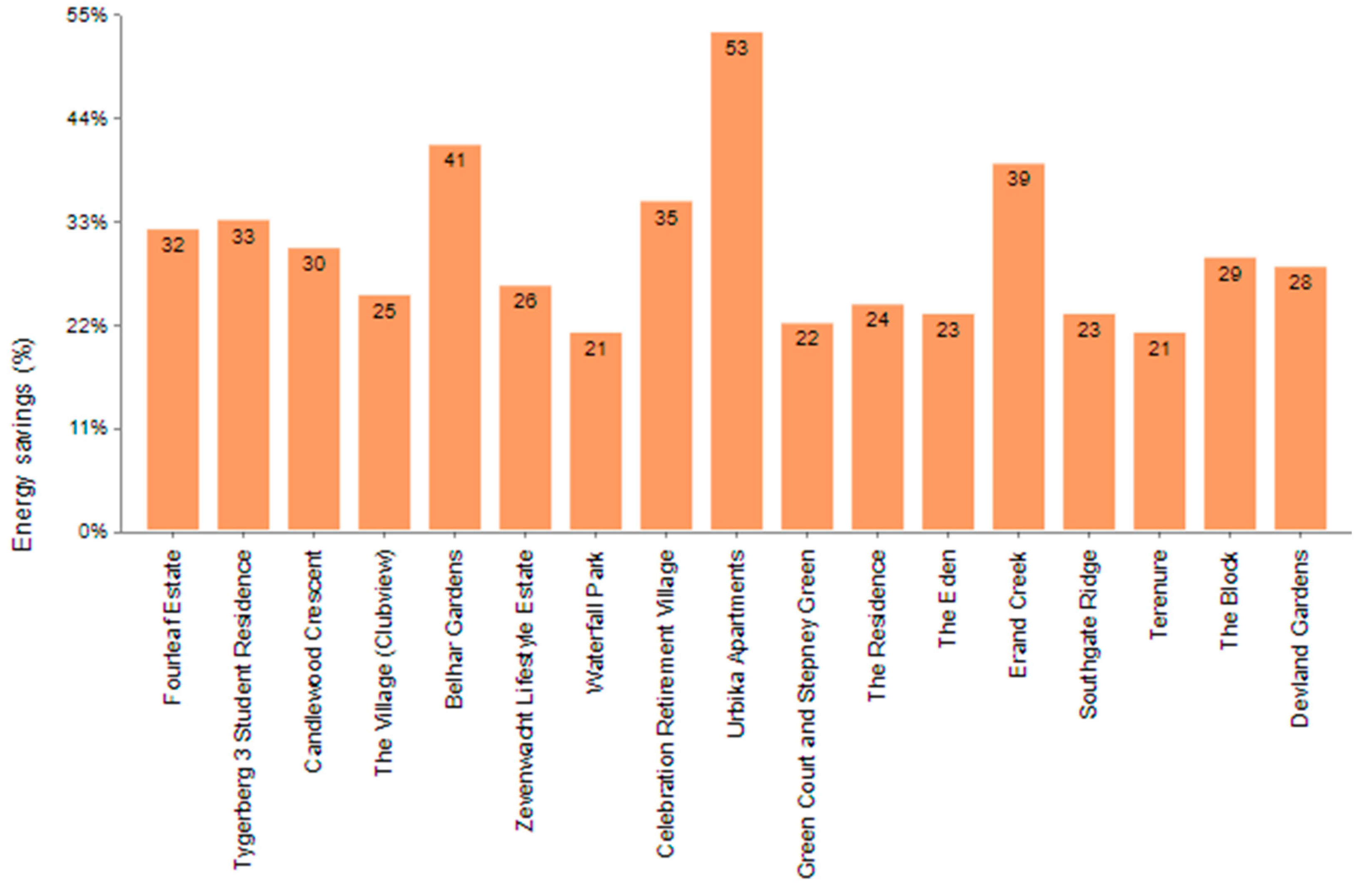
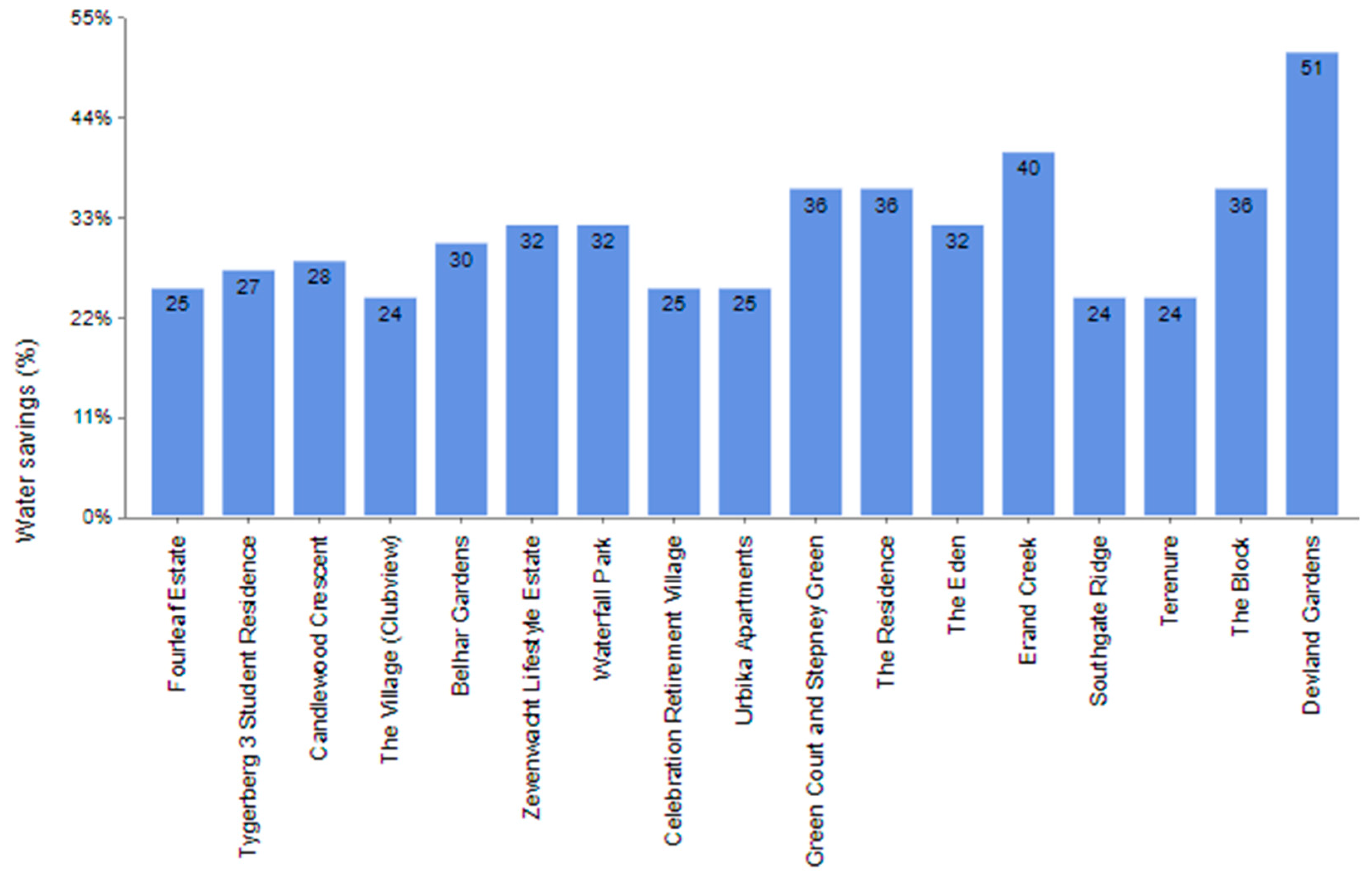
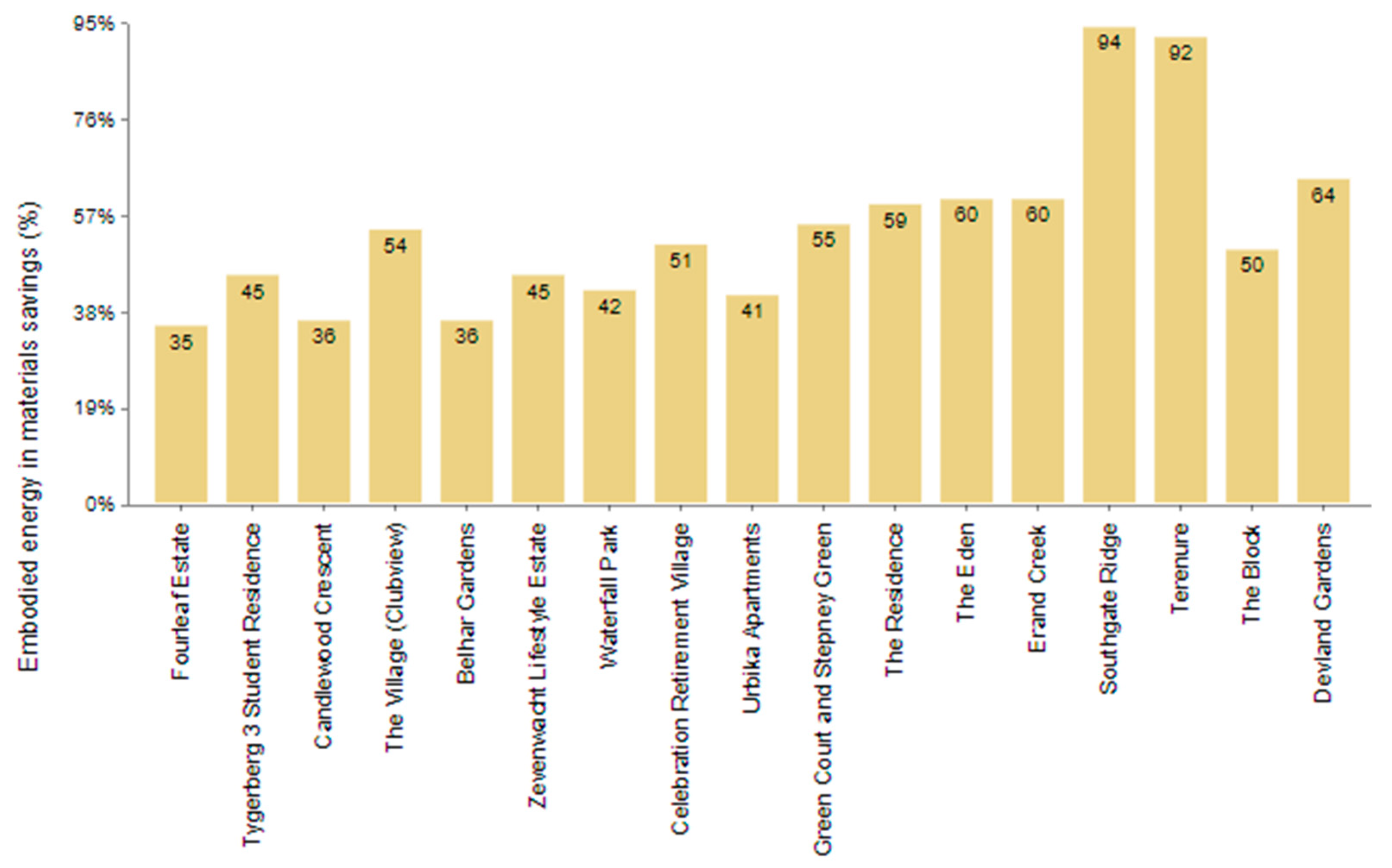
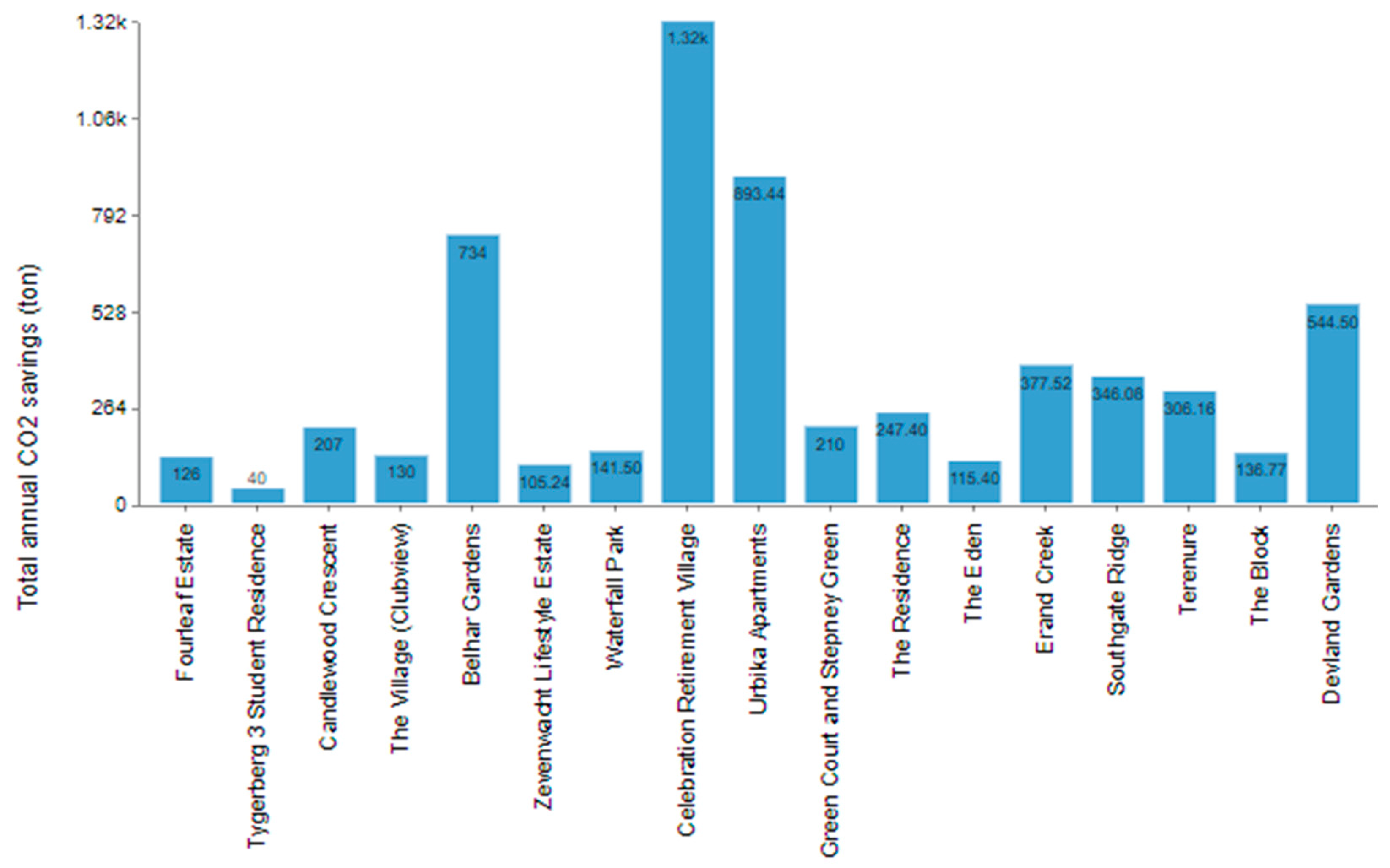
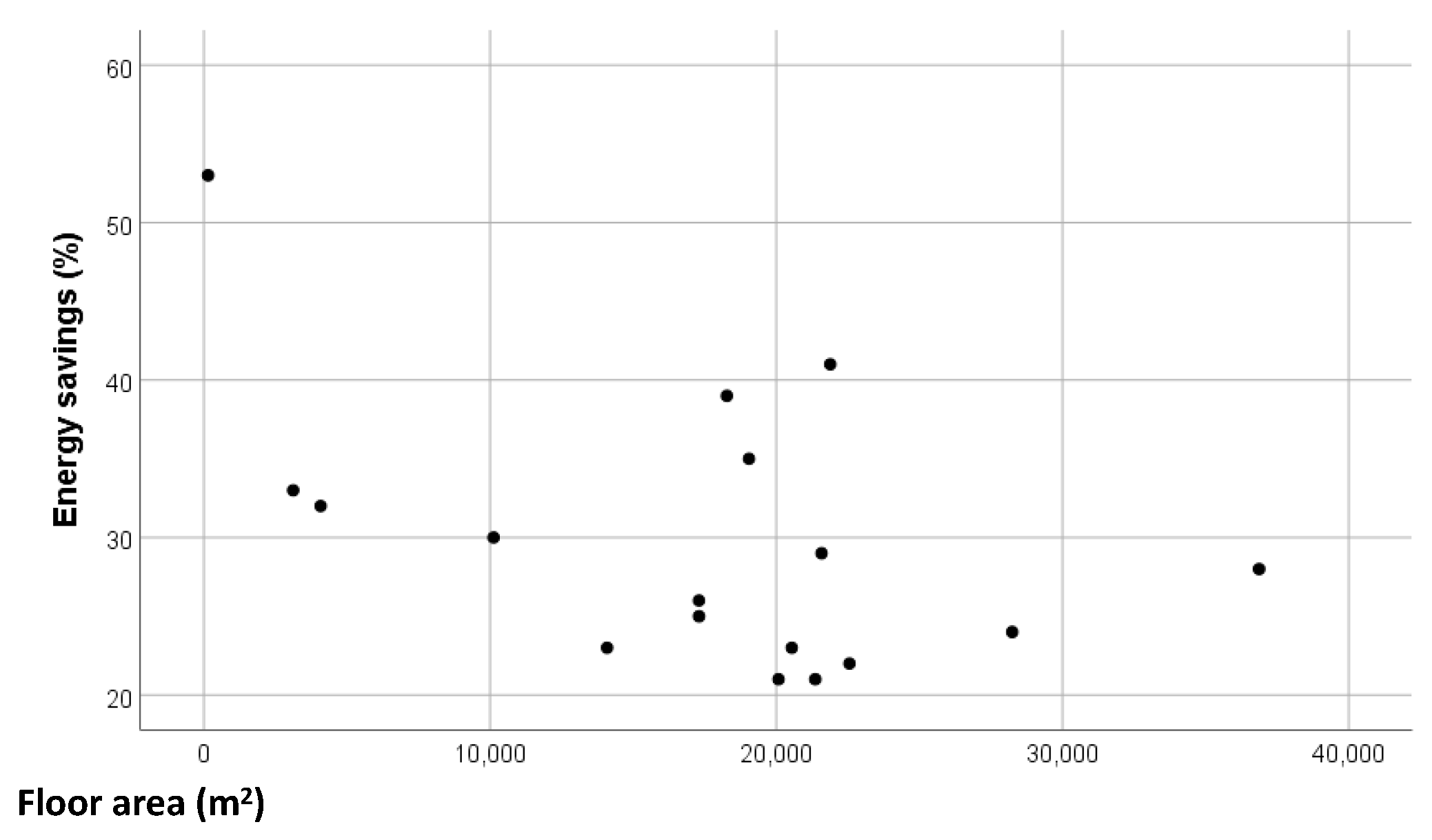
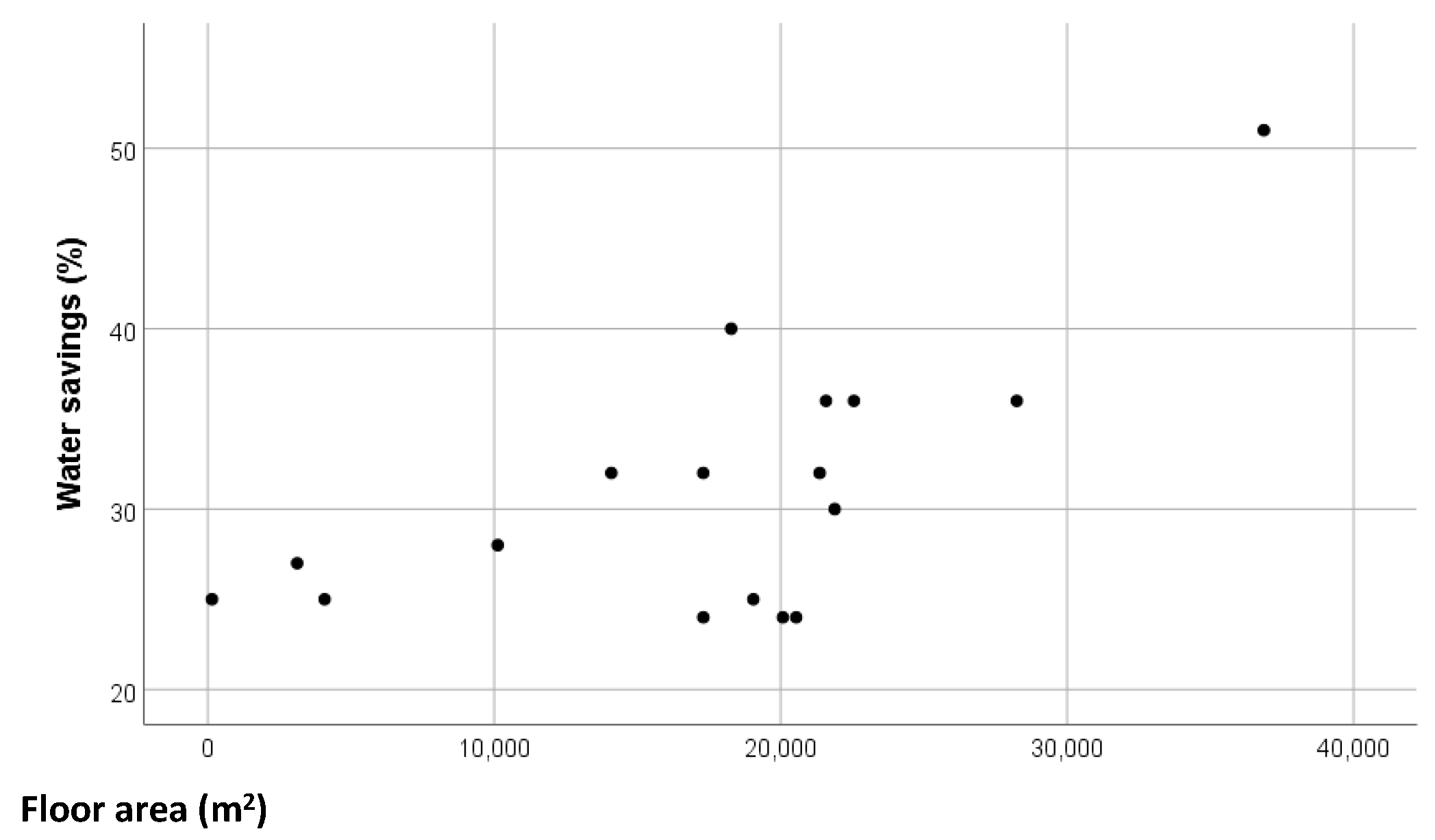
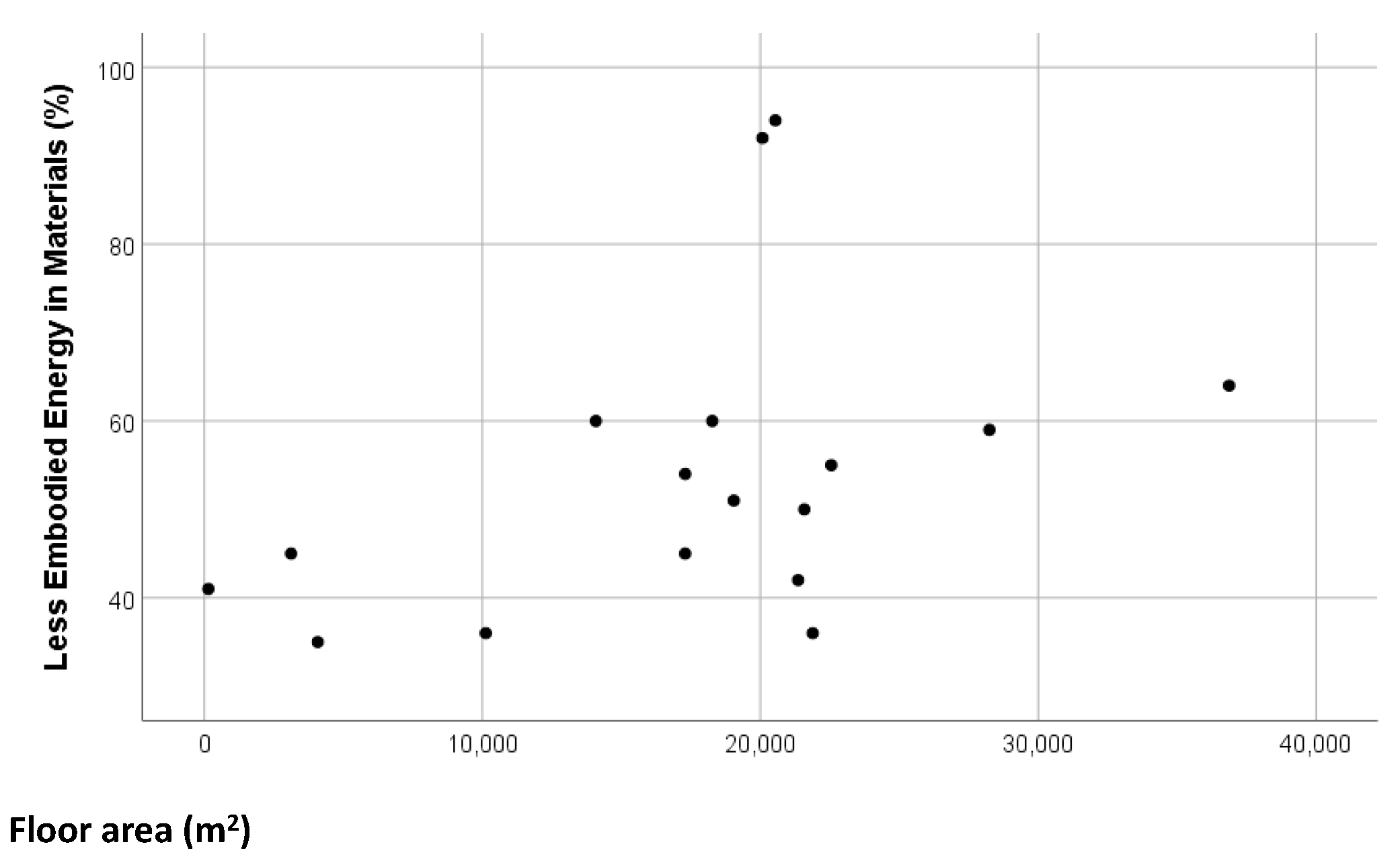
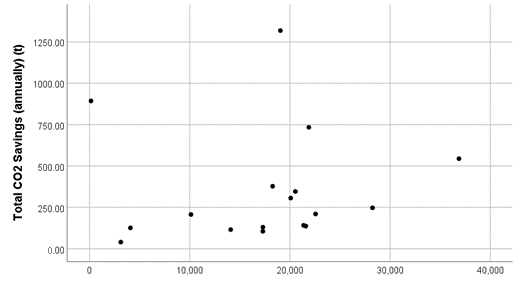
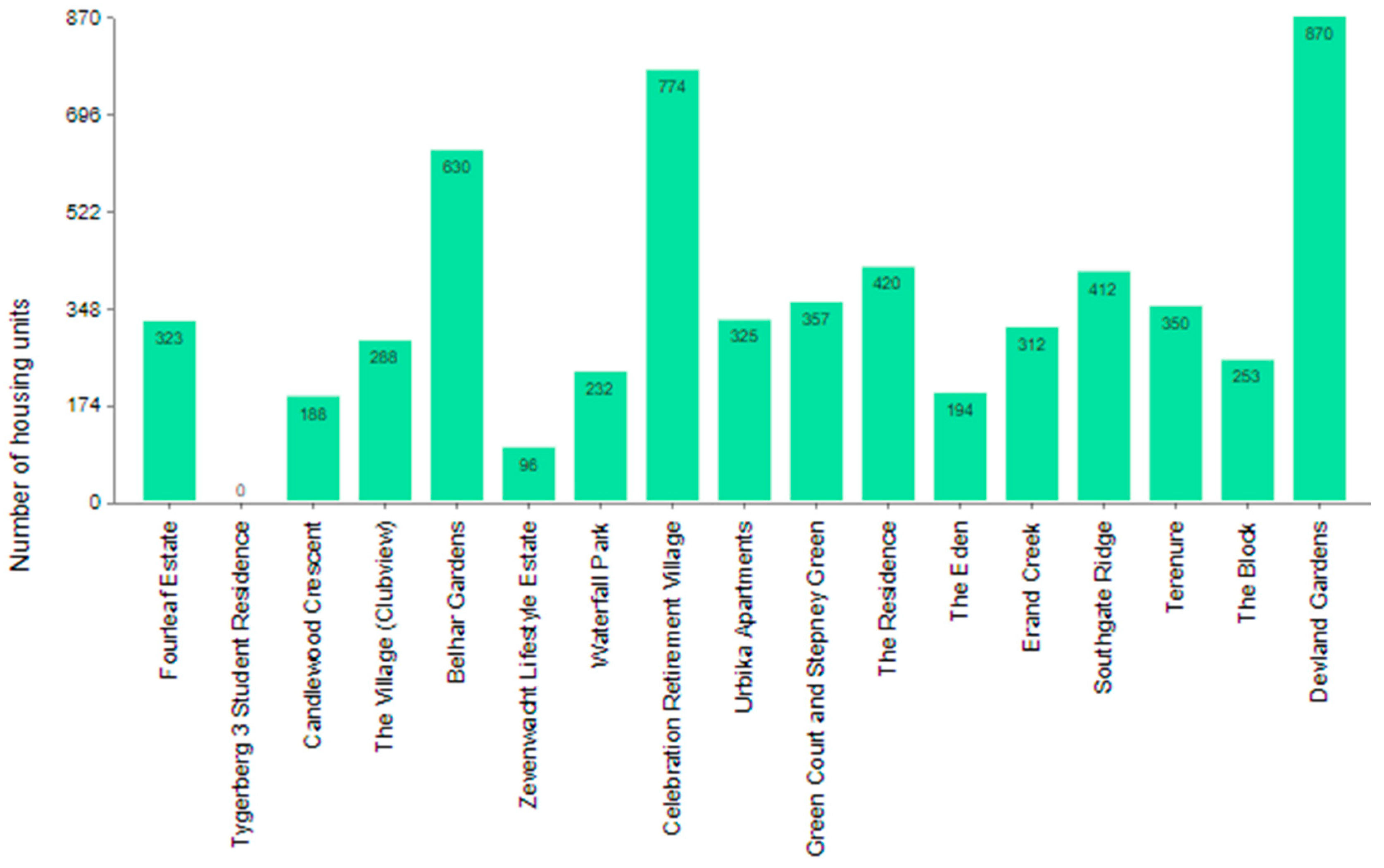
| Item | EDGE | BREEAM | LEED | DGNB | HQE | CASBEE | G-SEED |
|---|---|---|---|---|---|---|---|
| Energy | ✓ | ✓ | ✓ | - | ✓ | ✓ | ✓ |
| Water | ✓ | ✓ | ✓ | ✓ | ✓ | - | ✓ |
| Materials | ✓ | ✓ | ✓ | - | - | ✓ | ✓ |
| Indoor Environment | - | - | ✓ | ✓ | ✓ | ✓ | ✓ |
| Resources | - | ✓ | ✓ | ✓ | - | ✓ | ✓ |
| Land use | - | ✓ | - | ✓ | ✓ | - | ✓ |
| Transport | - | ✓ | ✓ | ✓ | - | - | ✓ |
| Site | - | - | ✓ | ✓ | ✓ | ✓ | - |
| Waste | - | ✓ | - | ✓ | ✓ | - | - |
| Ecology | ✓ | ✓ | - | - | - | - | ✓ |
| Innovation | - | ✓ | ✓ | - | - | - | - |
| Management | - | ✓ | - | - | - | - | ✓ |
| Pollution | - | ✓ | - | - | - | - | ✓ |
| Atmosphere | - | - | ✓ | - | - | - | ✓ |
| Health and wellbeing | - | ✓ | - | - | - | - | - |
| Integrative process | - | - | ✓ | - | - | - | - |
| Location | - | - | ✓ | - | - | - | - |
| Regional priority | - | - | ✓ | - | - | - | - |
| Resilience | - | ✓ | - | - | - | - | - |
| Economic quality | - | - | - | ✓ | - | - | - |
| Biodiversity | - | - | - | ✓ | - | - | - |
| Functionality | - | - | - | ✓ | - | - | - |
| Safety and security | - | - | - | ✓ | - | - | - |
| Technical quality | - | - | - | ✓ | - | - | - |
| Process quality | - | - | - | ✓ | - | - | - |
| Olfactory comfort | - | - | - | - | ✓ | - | - |
| Maintenance | - | - | - | - | ✓ | - | - |
| Quality of service | - | - | - | - | - | ✓ | - |
| Life cycle Assessment | - | - | - | ✓ | - | - | - |
| Components | - | - | - | - | ✓ | - | - |
| Off-site environment | - | - | - | - | - | ✓ | - |
| Building Name | Floor Area (m2) | Certification Stage 1 | Certification Date |
|---|---|---|---|
| Devland Gardens | 36,868 | PEC | 19 June 2022 |
| The Block | 21,582.72 | PEC | 1 November 2021 |
| Terenure | 20,077.28 | PEC | 1 November 2021 |
| Southgate Ridge | 20,542.32 | PEC | 1 November 2021 |
| Erand Creek | 18,273.36 | FEC | 1 August 2021 |
| The Eden | 14,087 | FEC | 1 December 2020 |
| The Residence | 28,242 | FEC | 1 December 2020 |
| Green Court and Stepney Green | 22,557 | FEC | 1 November 2020 |
| Urbika Apartments | 146.467 | PEC | 1 November 2020 |
| Celebration Retirement Village | 19,046 | PEC | 1 February 2019 |
| Waterfall Park | 21,361 | FEC | 1 January 2019 |
| Zevenwacht Lifestyle Estate | 17,297 | PEC | 1 July 2018 |
| Belhar Gardens | 21,886 | FEC | 1 March 2018 |
| The Village (Clubview) | 17,300 | FEC | 1 November 2017 |
| Candlewood Crescent | 10,124 | FEC | 1 October 2017 |
| Tygerberg 3 Student Residence | 3120 | PEC | 1 September 2017 |
| Fourleaf Estate | 4080 | FEC | 1 August 2017 |
| Aspects | Information | ||
|---|---|---|---|
| Country [40] | More than 140 countries | ||
| Active in 35 countries, | |||
| More active in Colombia, Ecuador, India, Indonesia, Mexico, South Africa, Vietnam | |||
| Energy [41,43] | Energy efficiency, Low energy consumption, renewable energy | ||
| Materials and chemical products | Selective choice of materials | ||
| material recycling | |||
| Target and priority [44] | Resource savings (energy, water and embodied energy in materials), affordability, solve housing shortage | ||
| Who may be a licensee [41] | Architect | ||
| Engineer | |||
| Developer | |||
| Building owner | |||
| Level of certification [16] | 3 levels (including EDGE Zero Carbon Certification (optional)) | ||
| License validity and renewal [16] | LEVEL 1: Certified | Not required | |
| LEVEL 2: EDGE Advanced | Not required | ||
| LEVEL 3: Zero Carbon | Every 4 years with 100% renewables | ||
| Every 2 years with purchased offsets | |||
| Building type [27] | Educational facilities, Residential complexes, hospitality facilities, medical centers, light industries, offices, retail, and warehouses (Only Residential complexes in South Africa). | ||
| Certification standard [16] | 20% reduction in operational energy consumption, embedded energy, embodied energy | ||
| Consideration for calculation [43] | Building type, occupant use [27] | Homes, hotels, offices, hospitals, retail, education | |
| Climate condition | Temperature, wind velocity, humidity, solar radiation, rainfall, CO2 | ||
| Location | |||
| Design, specifications | Base case, Improved case | ||
| On-site audit [41] | V | ||
| WWR [43] | Reduced WWR | 30%—residential building | |
| 55% non-residential building | |||
| Insulation [43] | Roof, ground/raised floor slab, exterior walls | ||
| User demand [43] | Overall energy demand | Heating, ventilation, air conditioning, plug loads, fans, cooking, hot water, | |
| Hot water demand | Cold water supply Temperature (mean annual temperature of location) | ||
| Hot water delivery temperature (40 °C) | |||
| Energy needs for hot water | |||
| Fuel energy needed | |||
| Lighting energy demand [43] | Use “quick method” under EN 15193′S energy requirements—installed lighting power, annualized usage | ||
| Water demand [43] | Fresh water, recycled water, rainwater harvested => water “savings” | ||
| Elements | Level 1: EDGE Certified | LEVEL 2: EDGE Advanced | LEVEL 3: EDGE Zero Carbon |
|---|---|---|---|
| Requirements | 20% or more savings in energy, water and embodied energy in materials | EDGE certified with 40% or more on-site energy savings | EDGE Advanced with 100% renewables on-site or off-site or purchased carbon offsets to complete at 100%. All energy must be accounted for, including diesel and LPG. |
| Timing | At preliminary and final certification stages | At preliminary and final certification stages | At least one year after final EDGE certification with 75% occupancy, when operational data must be submitted. |
| Renewal | Not required | Not required | Every four years with 100% renewables and every two years with purchased offsets. |
| Technical Solutions | Location | Percentage of Buildings with the Corresponding Solutions |
|---|---|---|
| Lighting controls | Common spaces | 41.2% |
| Outdoor | 11.7% | |
| Reflective paint | Roof | 11.7% |
| External walls | 5.9% | |
| Tiles and roof | 5.9% | |
| Energy-saving lighting system | Indoor | 70.6% |
| Outdoor | 58.8% | |
| Common areas | 35.3% | |
| Reduced window-to-wall ratio | Window + wall | 100% |
| Heat pump (hot water generation) | 35.3% | |
| Low-E coated glass | 5.9% | |
| Solar photovoltaics | 29.4% | |
| Smart electricity meters | 58.8% | |
| External shading devices | 17.6% | |
| Solar hot water collectors | 41.2% | |
| Roof insulation | 35.3% | |
| External wall insulation | 11.7% | |
| Natural ventilation | 5.9% | |
| Technical Solutions | Location | Percentage of Buildings with the Corresponding Solutions |
|---|---|---|
| Low-flow faucets | Bathroom sinks | 41.2% |
| Washbasins | 64.7% | |
| Kitchen sinks | 88.2% | |
| Low-flush toilet | Toilet | 5.9% |
| Low-flow showerheads | 88.2% | |
| Dual-flush (for) water closets | 88.2% | |
| Single flush water closets | 11.7% | |
| Technical Solutions | Location | Percentage of Buildings with the Corresponding Solutions |
|---|---|---|
| Hollow core precast slab | Floor | 41.2% |
| Roof | 29.4% | |
| Steel sheets on timber rafters | Roof | 47% |
| External walls | 11.7% | |
| Solid dense concrete block | Internal | 58.8% |
| External | 64.7% | |
| Cored bricks with internal and external plaster | Internal walls | 11.7% |
| External walls | 5.9% | |
| Cored bricks with plaster on both sides | Internal walls | 5.9% |
| Externals walls | 5.% | |
| Cement fiber boards on metal studs | Internal walls | 5.9% |
| External walls | 5.9% | |
| Exposed cored bricks with internal plaster | External walls | 5.9% |
| Clay roofing tiles on timber rafters | Roof | 5.9% |
| Micro concrete tiles on steel rafters | Roof | 17.6% |
| Cellulose roof insulation | 5.9% | |
| Finished concrete flooring | 5.9% | |
| Facing bricks | 11.7% | |
| Ceramic tiles (for) flooring | 41.2% | |
| Cork (for) flooring | 5.9% | |
| Aluminum window frames | 17.6% | |
| Floor slabs of hollow core precast slab roof | 11.7% | |
| Timber floor construction | 5.9% | |
| Cored bricks with plaster on both sides flooring | 5.9% | |
| Recycle of existing slabs, roof, internals and externals walls, flooring frames | 11.7% | |
| Savings | Correlation Coefficient R | Coefficient of Determination R2 | Estimated Regression Equation (Y = aX + b) |
|---|---|---|---|
| Energy in materials savings | 0.485 | 0.235 | Energy savings = 0 floor area + 37.619 |
| Water savings | 0.666 | 0.444 | Water savings = 0.001 floor area + 21.799 |
| Embodied energy savings | 0.418 | 0.175 | Embodied energy in materials savings = 0.001 floor area + 40.327 |
| CO2 savings | 0.067 | 0.004 | CO2 savings = 0.002 floor area + 308.2 |
| Building Name | Affordable Housing [40] | Developer/Client [40,41,42,43,44,45,46,47,48,49,50,51,52,53,54,55,56,57] |
|---|---|---|
| Devland Gardens | ✓ 1 | Instratin, IHS 4 |
| The Block | ✓ | TPF 5 |
| Terenure | ✓ | TPF |
| Southgate Ridge | ✓ | TPF |
| Erand Creek | ✓ | IHS |
| The Eden | ✓ | IHS |
| The Residence | ✓ | IHS |
| Green Court and Stepney Green | ✓ | IHS |
| Urbika Apartments | N/A | Similan Properties |
| Celebration Retirement Village | N/A 2 | Central Developments Property Group |
| Waterfall Park | ✓ | IHS |
| Zevenwacht Lifestyle Estate | N/A 2 | MSP 6 |
| Belhar Gardens | ✓ 1 | MHA 7 |
| The Village (Clubview) | ✓ | IHS |
| Candlewood Crescent | ✓ | RPP Developments, IHS |
| Tygerberg 3 Student Residence | N/A 3 | STAG African |
| Fourleaf Estate | ✓ | Similan Properties |
Publisher’s Note: MDPI stays neutral with regard to jurisdictional claims in published maps and institutional affiliations. |
© 2022 by the authors. Licensee MDPI, Basel, Switzerland. This article is an open access article distributed under the terms and conditions of the Creative Commons Attribution (CC BY) license (https://creativecommons.org/licenses/by/4.0/).
Share and Cite
Isimbi, D.; Park, J. The Analysis of the EDGE Certification System on Residential Complexes to Improve Sustainability and Affordability. Buildings 2022, 12, 1729. https://doi.org/10.3390/buildings12101729
Isimbi D, Park J. The Analysis of the EDGE Certification System on Residential Complexes to Improve Sustainability and Affordability. Buildings. 2022; 12(10):1729. https://doi.org/10.3390/buildings12101729
Chicago/Turabian StyleIsimbi, Delphine, and Jihyun Park. 2022. "The Analysis of the EDGE Certification System on Residential Complexes to Improve Sustainability and Affordability" Buildings 12, no. 10: 1729. https://doi.org/10.3390/buildings12101729
APA StyleIsimbi, D., & Park, J. (2022). The Analysis of the EDGE Certification System on Residential Complexes to Improve Sustainability and Affordability. Buildings, 12(10), 1729. https://doi.org/10.3390/buildings12101729






